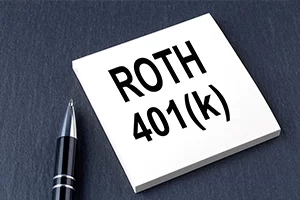
Business Advisory Services
Everything you need to help you launch your new business entity from business entity selection to multiple-entity business structures.
Hey - Our site just had a makeover and we are sorting through the hiccups!
Hey - Our site just had a makeover and we are sorting through the hiccups!

Everything you need to help you launch your new business entity from business entity selection to multiple-entity business structures.

Designed for rental property owners where WCG CPAs & Advisors supports you as your real estate CPA.

Everything you need from tax return preparation for your small business to your rental to your corporation is here.

Posted Wednesday, June 19, 2024
Table Of Contents
 One of our primary focuses at WCG is ensuring you are paying the least amount of taxes allowed by law. Some of our other primary focuses are helping you build wealth and leverage the most of your financial worlds for you and your family. However, these focuses or objectives are not isolated; they are very much related to each other and intertwined.
One of our primary focuses at WCG is ensuring you are paying the least amount of taxes allowed by law. Some of our other primary focuses are helping you build wealth and leverage the most of your financial worlds for you and your family. However, these focuses or objectives are not isolated; they are very much related to each other and intertwined.
Before we run through several tax reduction and tax avoidance ideas, let’s talk about some basic concepts.
There isn’t a secret tax deduction club that only a few people know about. If there were, it would be like Fight Club, right? But trust us, no one is intentionally keeping tax deductions a secret.
Most people are interested in saving cash when they say they want to reduce or avoid taxes, but saving cash and reducing taxes are not necessarily the same.
Two households, making the exact same income, might have wildly different tax liabilities based on the myriad of variables such as children, mortgage interest, charitable donations, available tax credits, and, yes, the proficiency of the tax professionals involved.
As household incomes travel through the ranges, a lot of things happen. The first $100,000 in income for most households is well-sheltered with itemized deductions and low tax brackets. The next $100,000 in income sees certain tax credits go away, higher tax brackets and fewer available tax deductions such as IRAs and other things (what we call income phase-outs). In other words, if you go from $100,000 to $200,000 in household income, you will pay way more than double in taxes (you could easily see 2.5 to 3.0 times more). Yuck! The next $100,000 and beyond is completely naked, and is generally purely taxable (unless some tax reduction tactics are deployed). Super yuck!
Tax deductions and tax deferrals are not the same. Tax deferrals are tax bombs later in life; little IOU’s to the IRS, and they will eventually call in the chit. But if you use the immediate tax savings to build wealth, then a tax deferral is worth it. Deferring taxes to pay for a cruise vacation might not always be the best approach (then again, live a little!).
You want to match the highest tax deduction to the high income. Let’s say it’s December and you are considering buying a piece of equipment. If next year’s income is going to be significantly higher, wouldn’t it make sense to wait until January to complete the purchase? Probably.
Tax deductions commonly need separation with cash. For example, you can save $2,500 (for example) in taxes right now if you write a check for $10,000 to a charity. That might not make sense if you are more interested in cash than taxes, right? Tax deferrals commonly require separation with cash as well, but at least you get it back. IRA’s and 401k plans (among others) come to mind.
Ok, here we go on those tax reduction and tax avoidance tactics.
Cost: Zero
Funding: NA
Tax Complexity: Bunny Hill
You sell securities whose price is stable yet is lower than what you paid. You use these losses to reduce capital gains on securities you sold previously (profit harvesting). Furthermore, you wait 30 days to prevent wash sale triggers and re-purchase the securities that were sold at a loss (only if you believe it will eventually rebound in a timeframe that makes sense given inflation and other economic conditions).
Cost: Interest Cost of Loan
Funding: NA, but need to have securities with unrealized gains
Tax Complexity: Green
There was chatter about taxing unrealized gains on stocks and other securities. Why? First, what are unrealized gains? These are “paper” gains where you buy a stock for $10, and it’s now worth $100, but you haven’t sold it yet. What is the big deal?
Well, let’s say you bought a bunch of Tesla stock in 2017 for $47, and now it is worth $1,000 a share. You have about $950 in unrealized gains per share. Let’s also say you invested $50,000 into Tesla stock back in 2017, and you now have around $1 million. If you sold this stock to grab the cash, you would pay capital gains taxes on $950,000 or about $170,000ish in taxes.
But can you grab some cash without paying taxes? Yes! You could easily borrow up to 50% (or higher depending on your situation) of the stock’s value, or about $500,000 in this example. In speaking with a Morgan Stanley financial advisor recently, they would lend up to 60% on Tesla stock and charge interest only payments at LIBOR (right around 2.5% for the past few years). So, you grab $600,000 in this example, pay 2.5% interest rate, and buy a rental or buy another investment (there are some rules here). You still own the Tesla stock. You probably can find a rate of return on the borrowed funds that exceeds LIBOR. Win-win!
There is some risk should the stock decline since you will need to reduce your loan with cash.
Now you know why there was chatter about taxing unrealized gains, since people are “converting” into cash for their benefit without paying taxes. Building wealth with tax avoided cash is certainly nice.
 Cost: Zero
Cost: Zero
Funding: NA, Money is Already Spent
Tax Complexity: Bunny Hill
You review money that has already been spent such as automobiles, travel, meals, etc. and determine if a business connection existed (or for future money spent, if a business connection will exist). The theory here is to take money that’s already budgeted to be spent and try to find a business connection (ordinary and necessary) and therefore a tax deduction. A wonderful example is purchasing a new car because you need one, and also being able to support a 100% business use of that car for a big, fat tax deduction.
Another great example is meals. Was the purpose of that get-together to discuss business? Then perhaps the meal is a business meal. How about that trip? This is a great tool in the reducing taxes toolbox that costs nothing.
Some expenses might not be an immediate tax deductions, but they might add to the cost basis (acquisition cost) of something. You travel to inspect a rental property that you are considering purchasing. When you close on the property and place it into service, typically the travel expenses will be added to the cost basis and depreciated.
Cost: Zero
Funding: Same as IRA and 401k
Tax Complexity: Green Circle
California tops the list of highest tax rates at 13.3%, with Hawaii at 11%, New York at 10.9%, New Jersey at 10.75% and Oregon at 9.9% rounding out the top five. If you can defer taxes through an IRA or 401k contribution for several years, and then retire in a lower income tax state, you can convert your income tax deferral into tax avoidance. In other words, you reduce your taxable income in California and then when you retire you establish residency elsewhere, like Nevada.
Pennsylvania among a few other states, however, does not honor the federal tax deferral of a 401k contribution. Therefore, when preparing a Pennsylvania tax return, pre-tax 401k contributions are added back to your income to arrive at taxable income. Yuck.
Besides the income tax-free states (AK, WA, NV, WY, SD, TX, TN, FL and NH) some states do not tax your 401k, IRA and pension income during retirement. Illinois, Mississippi, and our friend Pennsylvania. Some states, such as Colorado, only tax amounts over a certain exclusion amount.
Keep this in mind as you plan your wage-earning state versus your retirement state. Let’s review during a tax reduction strategy session.
Cost: Zero, Perhaps $500 for a Solo 401k Plan
Funding: Varies, Money is Restricted
Tax Complexity: Bunny Hill
You contribute to a qualified account or plan, and your taxable income is reduced. Taxes are paid when funds are distributed, but perhaps at a lower tax rate. Also, the tax savings today can be leveraged into other investments helping build wealth.
Beware! Reducing taxes today might bite you in the long-term. Your tax reduction objective is not a point in time, but rather over your lifetime. Keep reading!
Cost: Increased Tax Today, Zero Tax Tomorrow
Funding: Varies, Money is Restricted
Tax Complexity: Bunny Hill
First, when we say Roth 401k, we are not talking about Roth IRAs. We truly are talking about a post-tax contribution to a 401k plan. 401k plans and IRAs are totally different.
Next, unlike a Roth IRA, a Roth 401k does not have income limits. So, while you might be phased out based on income from a Roth IRA (modified adjusted gross income cannot exceed $214,000 for the 2022 tax year), you can make a zillion dollars and contribute to a Roth 401k.
Wait, there’s more! You can contribute $22,500 for the 2023 tax year into a Roth 401k, plus another $7,500 if you’re 50 or older. This is in stark contrast to a Roth IRA which is $6,000 + $1,000. Most 401k plans, both solo 401k plans and full-blown big-biz 401k plans, have two “accounts.” One for pre-tax or traditional 401k contributions, and another for Roth 401k contributions.
 Quick recap:
Quick recap:Roth 401k contributions have higher limits and do not have any income phaseouts. Let’s not forget about tax-free growth. So… Roth or pre-tax… which do you use?
Two arguments abound when considering a pre-tax 401k contribution. The argument goes like this: your retirement tax rate will be lower than your wage-earning tax rate. For those in the 32%, 35% or 37% marginal tax brackets, this is likely true. However, those earning big bucks probably continue to earn big bucks during retirement from investments, real estate, consulting, etc.
The other argument is about the free loan from the IRS. If you contribute $30,000 to your pre-tax 401k, and you are in the 32% marginal tax bracket, you just put $9,600 in your pocket ($30,000 x 32%). Sure, at some point the IRS wants it back when you withdraw it during retirement, and will tax the original contribution plus whatever you earned on it. But this falls into the let’s worry about next time, next time category.
As such, the second argument is about using the IRS’s money to build additional wealth. You take your $9,600 and do something good with it. Yeah, this sort of works. $9,600 annually might not move the needles much on your wealth building strategies. You would need $9,600 × 15 years at 6% rate of return just to afford a down payment on an average rental property. Takes the sizzle out, doesn’t it?
Rather, most wealth is built with after-tax dollars. The leveraging of the IRS free loan concept sounds great at the cocktail party until you put pencil to paper and gain perspective on the tiny size of the lever.
One final thought on this: is it easier to pay taxes during your wage-earning years or retirement years? Tax reduction strategy is a mental thing as well as a math thing.
Cost: NA
Funding: $7,750 for 2023 Tax Year
Tax Complexity: Bunny Hill
It’s a foregone conclusion that you have medical bills at some point in your life. If you are 59.5 years old, you can generally take money out of your IRA to fund your elective surgery. However, this eats into your retirement funds. Rather, if you max out your Health Savings Account (HSA), you can use those funds anytime for qualified medical expenses, and it is a tax deduction today (either a pre-tax deduction on your paycheck, or as a straight-up deduction on your tax return). Some call this triple tax-advantaged- contributions are tax-deductible, and growth is non-taxable, and distributions are non-taxable if used for qualified medical expenses.
Think of an HSA as yet another tax deferred retirement account. Pull money from your IRA or HSA when you need that new hip. You can also invest your HSA like any other tax-advantaged account.
The Net-Net: You will have medical bills. Might as well use tax-free money and reduce your taxes.
Cost: Varies
Funding: Varies, Money is Restricted
Tax Complexity: Green Circle
An important tax reduction option is the Roth IRA—a truly remarkable vehicle which allows you to pay taxes today, but then create a tax-free investment fund for the rest of your life. A simple rule to consider is that most investments double every 9–10 years, and with a Roth IRA this increase is tax-free.
You can also convert traditional IRA’s into Roth IRA’s. This creates a taxable event today but allows for tax-free growth. Conversions should be planned carefully, and are especially beneficial during low income years.
 Cost: Low
Cost: Low
Funding: Varies
Tax Complexity: Green Circle
You donate significant assets such as cash or securities or both to a donor advised fund. You get an immediate tax deduction for the fair market value, but those assets are not immediately donated to any one charity. This allows for two wonderful things; first, playing on the matching principle mentioned at the beginning of this article, you can make a massive donation during a uniquely high-income year. Second, you can then take your tax-deducted donation, and spread it out over multiple years while enjoying the tax benefit now.
Here is another consideration- let’s say your itemized deduction add up to $15,900, yet the standard deduction is $25,900 (for the 2022 tax year), or a difference of $10,000. You could donate $10,000 each year with no additional tax benefit (Yes, the state might give some) since you would be using the standard deduction versus an itemized deduction ($25,900 vs. $15,900). Do this for 10 years, and your $100,000 does not move the tax needle.
But! You donate a $100,000 to a donor advised fund, you get $90,000 at your marginal tax rate as cash in pocket ($90,000 x 24% is $21,600 in cash). You still get the itemized deduction bump of $10,000 to arrive at the standard deduction for 9 more years, your charity gets $10,000 each year as desired, and you are $21,600 richer. Real money, folks!
Tax planning for $400 please, Aaron. Yes, it’s a daily double!
Cost: NA
Funding: Uses existing IRAs
Tax Complexity: Green Circle
A QCD is a direct transfer of funds from your IRA to a qualified charity. QCDs can be counted toward satisfying your required minimum distributions (RMDs) for the year, as long as certain rules are met.
In addition to the benefits of giving to charity, a QCD excludes the amount donated from taxable income, which is unlike regular withdrawals from an IRA. Keeping your taxable income lower may reduce the impact to certain tax credits and deductions, including Social Security and Medicare.
Also, QCDs don’t require that you itemize your tax deductions. This means you may decide to take advantage of the higher standard deduction, but still use a QCD for charitable giving.
Cost: NA
Funding: NA
Tax Complexity: Bunny Hill
For S corporation shareholders, there is an optimal salary where you do three things. We discuss the following in our tax reduction planning meetings-
This is a massive way to reduce taxes. Not your income taxes, but your payroll taxes (Social Security and Medicare). It doesn’t matter what flavor the tax is — you want to reduce it.
Cost: NA
Funding: Prepay your State Income Taxes
Tax Complexity: Green Circle
Way back in 2017, the Tax Cuts and Jobs Act was passed with a lot of cool tax deductions like the Section 199A qualified business income deduction. But life is one big equalizer, and Congress wanted to limit state and local taxes (SALT) to $10,000. This means either state income taxes or real estate taxes, or both, were severely muted. People in South Dakota owning a $600,000 house were like, “what’s the big deal?!” People living in Oregon (second-highest state income tax rate next to California) owning the same house were like “WTF, over?!”
So! States got creative and created a state tax that was deducted on partnerships and S corporations (otherwise called pass-through entities) resulting in lower federal taxable income. This tax was in turn credited to the small business owner, resulting in lower state income taxes being reported on Schedule A on the business owner’s individual tax return (Form 1040). This also called the great SALT work-around.
Cash is cash to a business owner, whether it is spent by the business or the human. But there is a good feeling when your business pays your state income tax.
Cost: $4,000 to $6,000 Annually, Plus Additional Payroll Taxes on High Compensation
Funding: $100,000 to $150,000 Annually for 3–5 Years
Tax Complexity: Green Circle
A third-party administrator (TPA) and actuary design a self-funded pension plan that usually (but not always) is piggybacked onto a 401k plan with a profit-sharing plan. It requires significant cash for a period of 3–5 years, and is generally very difficult to pause or stop without risk.
Cost: NA
Funding: NA
Tax Complexity: Bunny Hill
An Accountable Plan, under IRC Section 1.62-2(C)(2), allows a business to reimburse an employee for expenses incurred in connected with the performance of duties for the business provided proper substantiation is followed (receipts, mileage logs, home office proof, the usual stuff). The substantiation rules are the same for taxpayers in general, but with an Accountable Plan, the “enforcer” is technically the business.
 The typical reimbursed expenses through an Accountable Plan are a) home office use including depreciation, b) mileage or business-use portion of automobile expenses, c) cell phone and d) internet. All these expenses have one thing in common — they are mixed used, both personally and business. Mixed-use expenses should be paid by the employee and later reimbursed. Conversely, anything that is 100% business use should be paid directly by the business.
The typical reimbursed expenses through an Accountable Plan are a) home office use including depreciation, b) mileage or business-use portion of automobile expenses, c) cell phone and d) internet. All these expenses have one thing in common — they are mixed used, both personally and business. Mixed-use expenses should be paid by the employee and later reimbursed. Conversely, anything that is 100% business use should be paid directly by the business.
The following is saying the same thing, but in bullet form:
Of course, if you are reaping some huge cash back or travel deals with your personal credit card, then by all means charge the 100% business use items to your personal card and run those expenses through an Accountable Plan.
Sidebar: The IRS and credit card businesses are butting heads over the rebate programs. It is an ascension of wealth and could technically be taxable income. Whoa! Yup, and the IRS would like 1099s to be issued to show the income. Today, these credit card rebates are considered a reduction in purchase price. This will be battled for the next decade for sure.
Cost: Varies
Funding: NA
Tax Complexity: Bunny Hill
You can pre-pay certain expenses up to 12 months such as rent, insurance premiums, professional fees, stock up on some office supplies, etc. The “12-month rule” lets you deduct a prepaid future expense in the current year if the expense is for a right or benefit that extends no longer than the earlier of:
This does not apply to loan interest. In other words, you cannot prepay your loan interest in advance (this would be considered a principal payment anyway). There are also some writings out there suggesting it doesn’t apply to purchases of furniture, equipment, and other long-term capital assets. It certainly does apply, and it is called Section 179 depreciation or bonus depreciation.
However, pre-paying expenses cannot be done in a vacuum. The concern is exactly the same as Depreciation Optimization below – you want to pre-pay business expenses in years of high income where the following year is going to be less. To pre-pay just to pre-pay without a plan is flailing.
Cost: NA
Funding: NA
Tax Complexity: Bunny Hill
Buying that big piece of equipment or fancy business car is a great way to reduce your taxable income through depreciation, whether it is Section 179 or Bonus. However, there might be some timing considerations. If you call your favorite tax pro at WCG, and ask if you should buy a car, we will usually ask two things. First, do you need a car? Buying a car just for the tax deduction is silly. Buying a car because you need one or want one, and then perhaps having it be a tax deduction, is icing on the cake.
Second, we will ask, what is your income this year as compare to next year. If your income is going to be a lot higher next year, shouldn’t you wait on that purchase so you can match a big tax deduction with increased income (assuming a higher tax bracket as well)? Perhaps. Optimizing your depreciation deduction can be a tax reduction windfall.
Cost: $500 for Form 3115, and Slight Increase in Tax Preparation Fees ($250 to $500)
Funding: NA
Tax Complexity: Green Circle
Accrual accounting allows for risk-based reductions in income recognition. For example, a commercial real estate broker typically has a clawback provision should a lease break before its term. Let’s say a real estate broker can safely demonstrate that 30% of the deals will breach and cash will be returned to the landlord (the clawback). In accrual accounting, a portion of the cash received could be classified as Unearned Revenue and therefore not taxed until it is earned (i.e., the risk of clawback on a portion of earnings has passed). But you still have the cash, which is king.
Cost: Increased Unemployment Taxes ($350 to $600)
Funding: NA, Money is Shifted (overall officer compensation remains the same)
Tax Complexity: Green Circle
By identifying your spouse as an officer and paying a salary, certain meals might be become business meals. He or she can join the primary business owner on business travel. The theory is similar to the Budget Review example, where money that is already budgeted to be spent is now seen as having a business connection. Generally, you need $2,000 or more in increased business expenses to be worthwhile. And yes, they have to work.
Cost: Social Security and Medicare Taxes at 15.3%
Funding: $13,850 per Child (standard deduction)
Tax Complexity: Blue Square (no bumps)
You pay your child $13,850 (for the 2023 tax year) or whatever the standard deduction is for that tax year, and they spend it on college or gift the money back to you (or they fund a Roth IRA and save the rest for their first home). This is a deduction to you at your tax rate, but is tax-free to the child. However, the child pays 7.65% in Social Security and Medicare taxes and the S Corp pays the same. Therefore, this usually works well when the parent’s tax rate is 24% or higher to provide a large enough delta between 15.3% (mandatory payroll taxes) and the parent’s tax rate.
You can also create some tax due to take advantage of the American Opportunity Tax Credit. Huh? Mom and Dad make too much money, and cannot take advantage of the AOTC education credit. But Junior, with a little tax due on their 1040 tax return from a $30,000 salary (for example), can get all the tax back as a credit plus the refundable portion. Something to consider.
Another way to look at this: you spend a lot of your own money on your children. That’s expected and makes sense. For you to spend $5,000 on club sports, you need to earn $7,500 (let’s say). However, your child’s salary, if under the standard deduction amount, is tax-free. To spend $5,000 only takes $5,000 in earnings. This is a great tax reduction strategy.
Yes, they have to work (since chores are a snap, why not have them work too).
Cost: $1,200 Annual Payroll Processing Fees plus $300 Additional Tax Prep Fees
Funding: $12,600 per Child
Tax Complexity: Blue Square
Similar to above, however, the S Corp pays a management fee to another LLC that is reported on Schedule C of Form 1040 (not an S Corp). Since this garden-variety LLC is not an S Corp, Social Security and Medicare taxes do not have to be paid on wages to children. $9,800 must be paid to the child(ren) to break-even on the costs. IRS risk is moderate since the business connection between the S Corp and the Family Management LLC might not be arms-length or in good faith.
Cost: NA
Funding: NA
Tax Complexity: Black Diamond
This is aimed at business owners where they no longer materially participate in the business activity, and as such they are now considered passive investors. Seems easy right, but why would you care? For two big reasons- first, if you have other non-deductible passive losses due to income limitations, such as those from a rental property, you can now have your passive income absorb these passive losses. This allows you to enjoy your tax benefits now rather than delaying the pleasure to future years. Yay!
Second, you might be able to only draw distributions from your business rather than earned income (ie, reasonable shareholder salary) + distributions. This saves you several thousands of dollars in avoided Social Security and Medicare taxes. Every $10,000 in owner salary is about $1,500 in payroll taxes. Yay again!
The world is always trending towards harmony, so here are the passive business owner downsides. It is difficult to claim passive business owner given the material participation tests. The hardest one to overcome is #5. Here is a blurb from our Real Estate Professional webpage which is applicable to all business owners, not just real estate related:
5. You materially participated in the activity for any 5 (whether or not consecutive) of the 10 immediately preceding tax years.
IRS Audit Techniques Guide (ATG): An activity is non-passive if the taxpayer would have been treated as materially participating in any 5 of the previous 10 years (whether or not consecutive). This test usually applies when a taxpayer “retires from material participation” but maintains an ownership interest in the activity. Yikes (emphasis added).
IRS Examination Techniques: Even if the taxpayer performs no services for a business currently, the examiner should inquire about involvement in prior years and review the returns to see if income or losses were treated as non-passive.
In other words, you need to look back for 10 years and if 5 of those years had material participation by you in the business activity (as defined by the IRS and Treasury Regs), then the IRS will disallow your passive claim. Could you start a brand new business without the history? Perhaps, but this might be viewed as an end-around especially if the new business magically looks, walks, talks and smells like the old. Transitioning from material participation to passive is certainly tough!
Our Short-Term Rental Tax Loophole webpage has a complete list of material participation thresholds plus the IRS ATG and examination techniques. These are used both ways- for you to prove material participation for various reasons, and for the IRS to do them same and disallow your passive claim. Gotta love a good tax code that cuts both ways!
With being a passive business owner with passive income, you might also now trigger the 3.8% net investment income tax (NIIT). This in itself is not a huge deal considering the potential tax savings.
 Cost: NA
Cost: NA
Funding: Varies, Depends on the Purchase Price
Tax Complexity: Blue Square (no bumps)
Passive losses from rental activities may reduce other sources of income such as earned income (W-2) and portfolio / investment income, but it is capped. It is limited to $25,000 annually which unfortunately hasn’t been indexed with inflation for multiple decades. This underscores the Treasury’s general opinion on passive losses. Next, this $25,000 is reduced $1 for every $2 over $100,000 in modified adjusted gross income (MAGI) for married filing jointly households. Simple math suggests that by $150,000 in MAGI, your passive losses are fully limited.
Passive losses that cannot be deducted in the current tax year are rolled forward and accumulated for later use typically on Form 8582 Passive Activity Loss Limitations. Generally, these suspended losses, or what Form 8582 refers to as unallowed losses, may be deducted against future passive income or if the activity (i.e., rental property) is sold.
There are two primary ways around the passive loss limitation; a) be considered a real estate professional as that term is defined by the IRS and not your bartender, or, b) leverage the short-term rental loophole.
The general gist of the STR loophole is quite simple. If the average stay of your guests over the course of the tax year and only considering actual rented days is 7 days or fewer and you materially participate in the activity (think business owner versus investor), then your rental activity is not deemed passive. Taking this one step further (and since your investment into the rental property is considered at-risk) losses from this type of activity are not limited and may be deducted against other sources of income such as W-2, K-1 from an S Corp, investment income, etc. Yay!
Keep in mind that depreciation is a great tax deduction since it is cashless. You can accelerate it with a cost segregation report, and reduce taxes substantially. Sure, this is a little IOU to the IRS when you sell the property, but not if you 1031 exchange it into something else. Also, you could theoretically deduct depreciation at 37% but only pay it back at 25% (depreciation recapture limit). A little tax arbitrage here.
Cost: $500 to $6,000
Funding: Varies, Depends on the Purchase Price
Tax Complexity: Blue Square (no bumps)
You are purchasing real estate property for business or rental use. Typically, the entire purchase price less the portion attributable to land is depreciated over 27.5 or 39.0 years. With a cost-segregation report, certain asset classes are established with varying depreciation schedules, and allow for certain parts of the building to have accelerated depreciation. All the bricks are figuratively torn down, put in different piles, labeled as such, and then re-assembled.
This works well when there is existing rental income or tax basis in the entity to allow for temporarily inflated tax losses through depreciation. If you are limited by passive-loss limitations because of your income, then a Real Estate Professional designation would need to be explored. Alternatively, the short-term rental loophole would help.
In other words, unless you have net rental income, or you aren’t limited by passive activity loss limits, then the accelerated deprecation from a cost segregation study will not provide the impact worth the cost.
However, should you benefit from a cost segregation study and the related big tax deduction, then perhaps pairing this with a Roth conversion on your traditional IRA makes sense as well.
Cost: NA
Funding: NA
Tax Complexity: Blue Square (with bumps)
To be a real estate professional, an individual must spend the majority of his or her time in real property businesses which include development or redevelopment, construction or reconstruction, acquisition or conversion, rental, management or operation, leasing and / or brokerage.
In addition, more than half of the personal services performed in all businesses and activities during the year must be performed in real estate activities. Read this again! If you have another full-time job in which you work 40 hours a week, you will need to work more than 40 hours per week in your real estate business. That can truly be a hard sell to the IRS. Said another way, that is 6 hours per day, 365 days a year, spent on your rentals (should you have a regular 40-hour a week job). Having W-2 income is listed in the Audit Techniques Guides (ATG) as a trigger for a possible IRS challenge.
Second, your hours worked in the real estate activity must be more than 750 hours. Any work performed as an investor such as research or travel time cannot be counted. Taxpayers are required under Internal Revenue Code Section 1.469-5T(f)(4) to provide proof of services performed and the hours attributable to those services.
Meet the above, and poof, you are a real estate professional (REP) and your activity is no longer labeled passive and therefore is no longer limited on losses for tax deduction purposes.
One of the often-overlooked benefits of REP status is avoiding net investment income tax (NIIT). While this section is mostly focused on passive losses, if you have rental activities that results in taxable income, and your household income is $250,000 or more for those married filing jointly, your rental income might be deemed investment income and as such be subject to the 3.8% NIIT. Yay, more tax savings.
Cost: Varies, Usually Small for 1031 Intermediaries
Funding: Money is Restricted
Tax Complexity: Green Square
When you sell a property, you can invoke Section 1031 of the Internal Revenue Code to fully defer your capital gains tax including taxes associated with depreciation recapture, as long as you buy another similar property within 6 months. This is also called a like-kind exchange.
Do this right, and you can daisy-chain transactions to avoid capital gains on real estate through your entire life, while enjoying the benefits of larger and larger incomes (the assumption is that you “1031” into larger investments with better cashflow, etc.). To top it off, your heirs still get a full step up in basis under current tax law.
Cost: Zero
Funding: NA, Money is Not Restricted
Tax Complexity: Blue Circle
You find a business connection for renting space in your home for 14 days or fewer. Client parties and presentations are good examples. Board meetings for closely held businesses is a bad example (or at least one that is tough to defend). Your business enters into a lease arrangement at market rates. The business deducts the amounts paid as rent and issues a 1099 to you. On your tax return, the amount of rent is reduced to zero with a one-time expense under Section 280A in the amount of rent.
This is very similar to adding your children to payroll. It is a business tax deduction, but the recipient doesn’t pay taxes. More tax arbitrage! But let’s be reasonable- to say your 1-person S Corp needs to have monthly board meetings in your home at $1,500 a crack is a bit much.
Cost: $1,500 Tax Preparation plus $500 to $700 Plan Administration
Funding: NA, Money is Shifted
Tax Complexity: Blue Square
C corporations are not deemed to be pass-through entities, and therefore have additional flexibility in providing certain health-related benefits without being considered taxable fringe benefits to the owners. Another entity (for example, an S Corp) pays a management fee to the C Corp. The C Corp in turn uses the revenue to pay for certain health-related benefits and reimbursements. About $6,000 or more in health-related benefits must be paid for this arrangement to break-even. IRS risk is moderate, since the business connection between the S Corp and the C Corp might not be arms-length or in good faith.
Cost: Varies
Funding: Varies, Money is Restricted
Tax Complexity: Blue Circle
Retirement accounts are only one way to create tax-advantaged investments; the relationship between permanent life insurance policies and taxes can be a good one. You can use a well-constructed policy to sock away cash and let it grow tax-free, then take carefully planned loans from the policy tax-free, and pass the benefit along to your heirs tax-free over the course of a lifetime. The issues are complex (for example, insurance benefits may be subject to estate taxes but not income taxes), the timeframes are long, and you need professional help to do this right. Yet, insurance remains a powerful tax-avoidance tool.
This is very similar to borrowing against your increased stock values we talked about way back when (see above — way, way above).
Cost: Varies, Could be Significant
Funding: Varies, Usually $25,000 or Higher
Tax Complexity: Terrain Park, Target IRS Audits and Challenges (some are abusive tax shelters)
You find a piece of land or some other donate-able property. You purchase it for $25,000 (for example), however, an appraisal opines a fair market value of $150,000. Your tax rate is 37% and as such you deduct $150,000 which creates a reduction in taxes of $55,500. You might pay $5,000 in fees, so your overall savings, is about $25,000 cash in pocket.
Cost: Very High
Funding: Very High ($1.2M in premiums), Money is Restricted
Tax Complexity: Terrain Park
You start an insurance company and identify a handful of insurance risks that the captive insurance company will insure. Employee theft, business continuance, professional liability, among many others. Life insurance should be avoided. The premium of $1.2M is deducted by the operating company but isn’t considered income to the captive insurance company. Taxes are paid, however, on the investment income within the captive insurance company. Eventually, the money is returned to you at dividend tax rates.
Tax savings is the difference between ordinary income tax rates and capital gains tax rates.
Cost: Varies, Attorneys and Valuations Are Needed
Funding: Varies, Money is Restricted
Tax Complexity: Terrain Park
Basic valuation theory has two discounts. A discount for lack of control suggests that a minority interest in a business is worth less than the pure ownership percentage. For example, owning 10% of a business worth $500,000 as a whole might be realistically worth $30,000 (versus $50,000). Another discount is lack of marketability, which suggests that an interest or a share of a closely held business is not easily convertible to cash.
Another way to look at this; if you take Van Gogh’s Portrait du Docteur Gachet and tear it up into 33 pieces, each piece is worth $0. You put them back together, and you now have a $192,400,000 painting.
So the practice goes like this. You gift 3% of your $25,000,000 business to your heirs. A valuator determines that because of discounts for lack of control (DLOC) and discounts for lack of marketability (DLOM), the 3% is only worth $300,000 instead of strict $25,000,000 x 3% or $750,000. No gift tax is paid since Mom and Dad use a part of their lifetime exclusion.
When all the 3%’s are re-assembled on the back-end, the collection is now worth $25,000,000. Transferred all tax-free.
Cost: Varies, Attorneys and Valuations Are Needed
Funding: Varies, Money is Restricted
Tax Complexity: Terrain Park
This involves basic valuation and discounting theory as the Family Limited Partnership stuff previously. You have a fully self-directed IRA that owns non-publicly traded securities and interests such as partnerships. Because you lack control (minority interest) and lack marketability (restricted on whom you can sell to, and there is not a market), your investment is devalued. It goes like this; you buy a $1,000,000 partnership interest. You hire a valuator to determine the value on December 31 for the completion of Form 5498. The valuator applies appropriate discounts and determines the fair market value is $600,000. Next, you perform a Roth conversion, pay taxes on the $600,000 and save nearly $150,000 in taxes on the discount amount of $400,000.
Cost: Expensive
Funding: Varies, Money is Restricted
Tax Complexity: Black Diamond
These are three variations on a common strategy for the intergenerational sharing of wealth to avoid or reduce taxes. A GRAT is a Grantor Retained Annuity Trust. It is created when a grantor contributes assets with appreciation potential to a fixed-term, irrevocable trust. The grantor then retains the right to receive an annuity stream over the trust’s term. At the end of the term, the assets are distributed to noncharitable beneficiaries — typically, the grantor’s children.
A GRIT is not something made from corn but rather is a Grantor Retained Income Trust. It is similar to a GRAT, but spouses, children and other family members cannot be beneficiaries. Since the Revenue Reconciliation Act of 1990, the use of GRITs is very limited.
A Private Annuity is an agreement where an individual transfers property to an “Obligor” (probably your child), and the Obligor agrees to make payments to the “Obligee” (which is the annuitant, i.e., you) on an agreed schedule. A Private Annuity makes sense when the underlying asset is expected to increase in value, and avoids both gift taxes and estate taxes.
All three of these variants assume an expected large growth in asset value while the asset also pays out an income. This stuff is very tricky, has rules and limitations (shocker) and requires a skilled estate planning attorney.
Table Of Contents

Tax planning season is here! Let's schedule a time to review tax reduction strategies and generate a mock tax return.

Tired of maintaining your own books? Seems like a chore to offload?
Not sure where to go with all these tax reduction strategies? Let’s chat!
The tax advisors, business consultants and rental property experts at WCG CPAs & Advisors are not salespeople; we are not putting lipstick on a pig expecting you to love it. Our job remains being professionally detached, giving you information and letting you decide within our ethical guidelines and your risk profiles.
We see far too many crazy schemes and half-baked ideas from attorneys and wealth managers. In some cases, they are good ideas. In most cases, all the entities, layering and mixed ownership is only the illusion of precision. As Chris Rock says, just because you can drive your car with your feet doesn’t make it a good idea. In other words, let’s not automatically convert “you can” into “you must.”
Let’s chat so you can be smart about it.
We typically schedule a 20-minute complimentary quick chat with one of our Partners or our amazing Senior Tax Professionals to determine if we are a good fit for each other, and how an engagement with our team looks. Tax returns only? Business advisory? Tax strategy and planning? Rental property support?

Everything you need to help you launch your new business entity from business entity selection to multiple-entity business structures.

Designed for rental property owners where WCG CPAs & Advisors supports you as your real estate CPA.

Everything you need from tax return preparation for your small business to your rental to your corporation is here.


